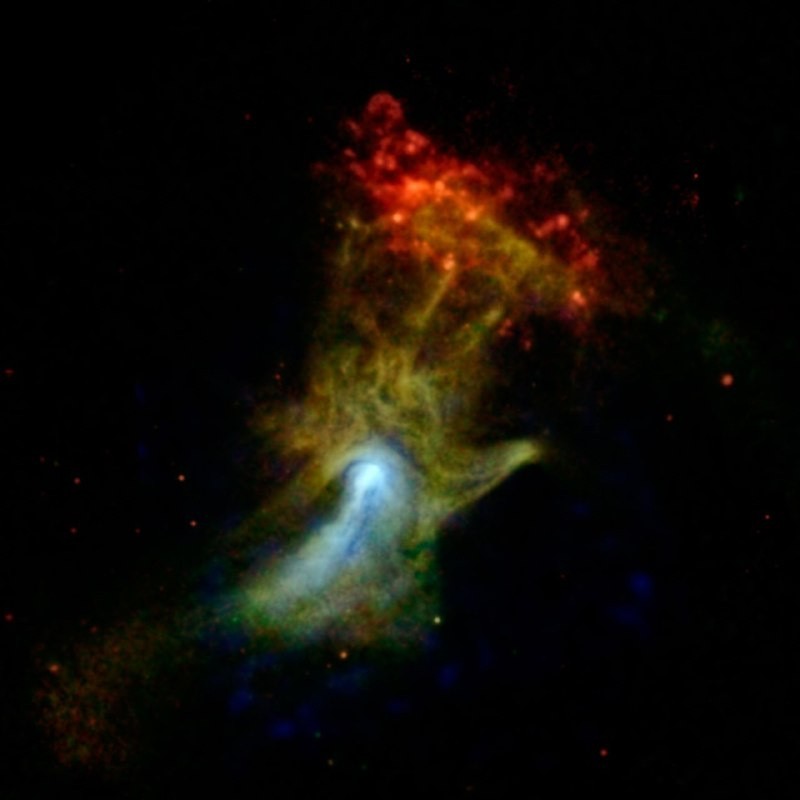
A gigantic "hand" has been captured in space due to the death of a star going supernova that created the cosmic illusion.
Chandra X-Ray Observatory
According to Space.com, NASA's Chandra X-ray Observatory was the hero who spotted the ghostly image as it was looking out through space. Originally, its mission was to observe cosmic phenomena such as quasars, supernovas, black holes, and the sort.
Besides Chandra's recent discovery, it has witnessed a number of other wonders, such as a black hole that created enormous hurricane winds, a star before it turned supernova, and galaxies that were on a collision course.
Chandra has been in operation for over two decades now since its launch from the space shuttle Columbia back in July 1999. NASA dubbed Chandra among the four "Great Observatories," such as the Hubble Space Telescope, which remained offline due to technical issues, the Compton Gamma Ray Observatory, and Spitzer Space Telescope that was recently decommissioned.
Read More : SpaceX Falcon 9 Rocket to Launch Satellites that Feature Climate Change, Endangered Wildlife Monitoring
Details Regarding The Bizarre Phenomena
The origin of the "hand" was a place called MSH 15-52.
Scientists theorized that MSH 15-52 exploded over 1,700 years ago, which makes it one of the first supernovas spotted in the Milky Way galaxy from thousands of years ago.
The cosmic "hand" was spotted 17,000 light-years away from our little green planet. The occurrence of the amazing view was caused by the death of a star that turned supernova. The result left behind an intense and quick-moving cosmic body called a pulsar.
The pulsar then created a wave of particles emitting energy around it, and then was combined by the debris from the aftermath of the supernova.
The result was the hand-like image that is 150 light-years long, stretching out to the equally enormous gas cloud called RCW 89.
The almost two thousand year old star most likely created a great cavity right after exploding. Thus making the outermost hydrogen layer shed to form chilling image of the cosmic "hand."
Chandra Team Members' Thoughts
The research was published in The Astrophysical Journal Letters in June 2020.
Members of the Chandra team who first witnessed the cosmic spectacle said, "While these are startling[ly] high speeds, they actually represent a slowing down of the remnant. Researchers estimate that to reach the farthest edge of RCW 89, material would have to travel on average at almost 30 million miles per hour [48.2 million kph],"
The supernova blast wave seen as the fingertips of the "hand" is traveling at an astonishing 9 million mph. What's more surprising is that the debris closer to the palm of the "hand" are travelling at a faster rate of 11 million mph or more.
While these are startling[ly] high speeds, they actually represent a slowing down of the remnant. Researchers estimate that to reach the farthest edge of RCW 89, material would have to travel on average at almost 30 million miles per hour [48.2 million kph]," a member of the Chandra team added.
Read More : SpaceX Falcon 9 Rocket to Launch Satellites that Feature Climate Change, Endangered Wildlife Monitoring
This article is owned by Tech Times
Written by Alec G




